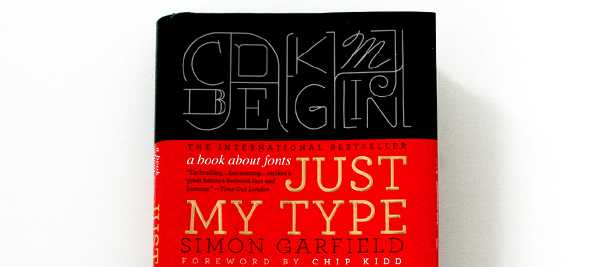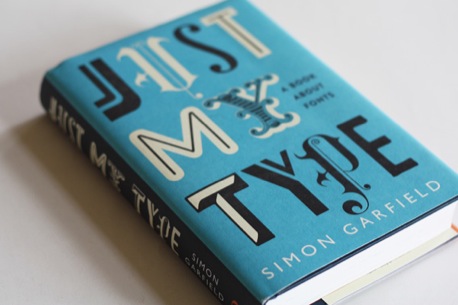
Just My Type: A Book About Fonts
Have you ever wondered why the font you’re reading this in looks the way it does? Or why different fonts evoke different emotions or associations? The answers lie in the fascinating world of typography, where fonts are more than just symbols on a page—they’re a means of expressing ourselves.
In her book Just My Type: A Book About Fonts, author Simon Garfield delves into the history, psychology, and cultural significance of fonts. She explores how fonts have evolved over the centuries, from the first handwritten scripts to the digital fonts we use today. She also examines the role fonts play in our everyday lives, from the books we read to the websites we visit.
The Importance of Fonts
Fonts aren’t just a matter of aesthetics; they also have a profound impact on the way we perceive information. A well-chosen font can make a text more readable, engaging, and memorable. Conversely, a poorly chosen font can make a text difficult to read and understand.
The right font can also convey a specific mood or tone. For example, a serif font, with its elegant curves and flourishes, is often used to create a sense of formality and tradition. A sans-serif font, on the other hand, with its clean, geometric lines, is often used to create a sense of modernity and simplicity.
The Evolution of Fonts
The history of fonts is a long and winding one, dating back to the earliest forms of writing. The first fonts were handwritten, with each letter being carefully drawn by a scribe. As printing became more widespread, fonts became standardized, with the development of movable type. The invention of the computer in the 20th century led to the development of digital fonts, which are now used in a wide variety of applications.
Throughout history, fonts have evolved to reflect the changing needs of society. In the early days of printing, fonts were designed to be as legible as possible, with a focus on clarity and readability. As printing became more sophisticated, fonts became more elaborate, with the addition of decorative elements and flourishes. In the digital age, fonts have become more versatile, with the development of new technologies that allow for a wider range of design possibilities.
The Psychology of Fonts
The way we perceive fonts is influenced by a variety of psychological factors. Research has shown that different fonts can evoke different emotions and associations. For example, a study by the University of Reading found that people who read text in a serif font were more likely to perceive the text as being credible and authoritative. Another study, by the University of California, Berkeley, found that people who read text in a sans-serif font were more likely to perceive the text as being friendly and approachable.
The psychology of fonts is a complex field, but there are some general principles that you can keep in mind when choosing a font. If you want to create a text that is credible and authoritative, you might want to use a serif font. If you want to create a text that is friendly and approachable, you might want to use a sans-serif font. Of course, there are many other factors to consider when choosing a font, such as the purpose of the text, the audience, and the overall design of the document.
The Cultural Significance of Fonts
Fonts are not just a way to communicate information; they are also a reflection of our culture and values. The fonts that we use say something about who we are and what we believe. For example, the Times New Roman font is often associated with traditionalism and conservatism, while the Helvetica font is often associated with modernity and liberalism.
Fonts can also be used to express political or social messages. For example, the “Black Lives Matter” logo is set in a bold, sans-serif font that conveys a sense of urgency and determination. The “Love Trumps Hate” logo is set in a more playful, cursive font that conveys a sense of hope and optimism.
Tips for Choosing the Right Font
Choosing the right font can be a daunting task, but there are a few tips that you can keep in mind. First, consider the purpose of the text. What do you want to convey with your writing? Once you know the purpose of the text, you can start to narrow down your options.
Next, consider the audience. Who are you writing for? What kind of fonts are they likely to be familiar with and receptive to? Once you know your audience, you can start to choose a font that will appeal to them.
Finally, consider the overall design of the document. What kind of tone do you want to create? What kind of fonts will complement the other elements of the design? Once you have considered all of these factors, you can start to experiment with different fonts until you find one that you’re happy with.
Expert Advice
If you’re still not sure how to choose the right font, you can always seek out expert advice. There are many professional typographers who can help you choose the perfect font for your project. They can also provide you with advice on other aspects of typography, such as font size, leading, and kerning.
Here are a few tips from expert typographers:
- Use a font that is appropriate for the purpose of the text.
- Consider the audience for the text.
- Choose a font that is easy to read.
- Use a consistent font throughout the document.
- Don’t be afraid to experiment with different fonts.
FAQ
Q: What is the difference between a serif and a sans-serif font?
A: A serif font has small strokes at the ends of the characters, while a sans-serif font does not.
Q: What is the most popular font?
A: The most popular font is Helvetica, which is a sans-serif font that is used in a wide variety of applications.
Q: What is the best font for reading?
A: The best font for reading is a serif font, such as Times New Roman or Georgia, which is easy on the eyes.
Q: What is the most expensive font?
A: The most expensive font is Trajan Pro, which was designed by Carol Twombly in 1989 and is used by major brands such as Coca-Cola and Ford.
Conclusion
Fonts are more than just symbols on a page; they are a powerful tool that can be used to communicate information, evoke emotions, and express our culture and values. By understanding the history, psychology, and cultural significance of fonts, we can use them more effectively in our own writing and design work.
If you’re interested in learning more about fonts, I encourage you to check out Just My Type: A Book About Fonts by Simon Garfield. It’s a fascinating and informative read that will give you a new appreciation for the role that fonts play in our lives.

Image: www.designersreviewofbooks.com